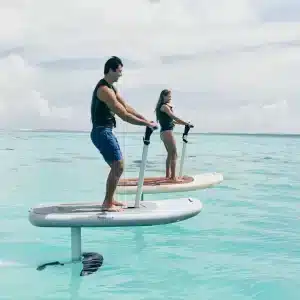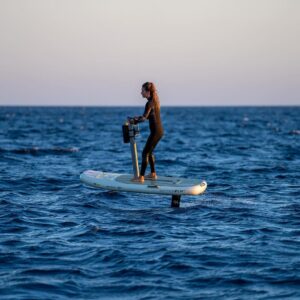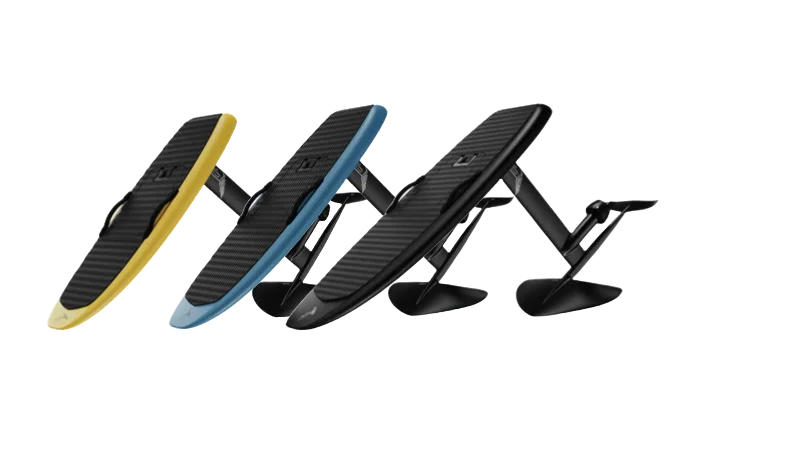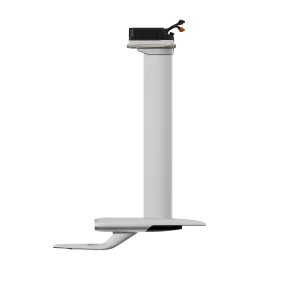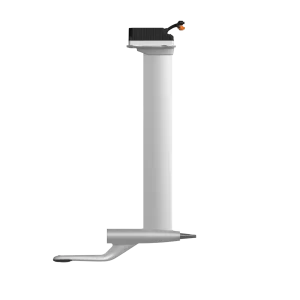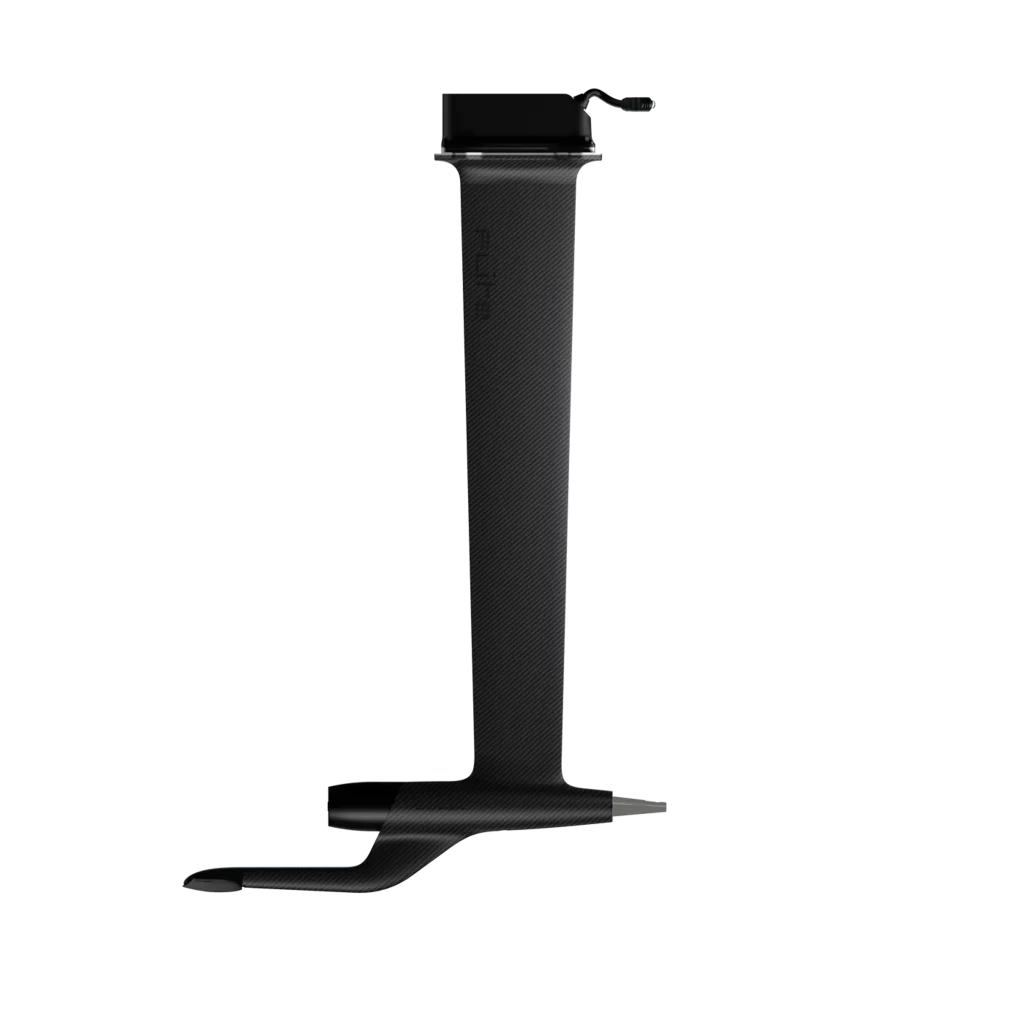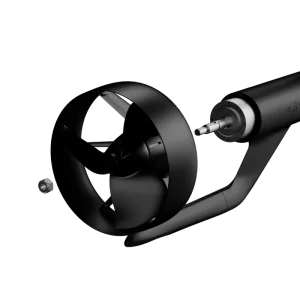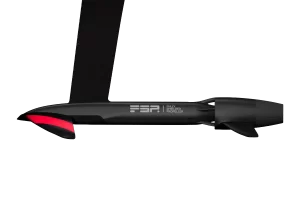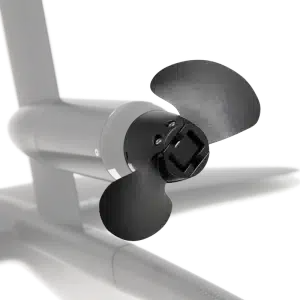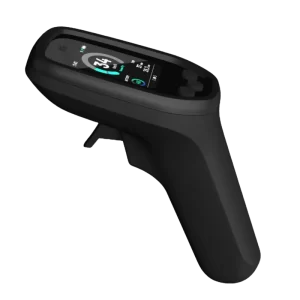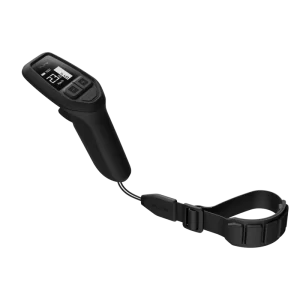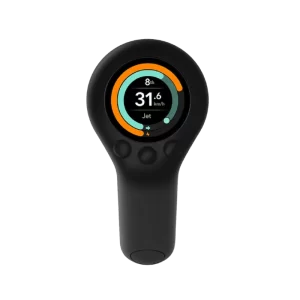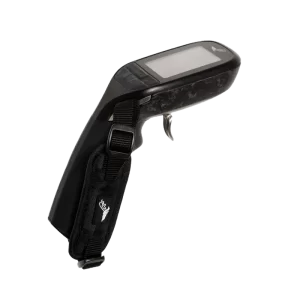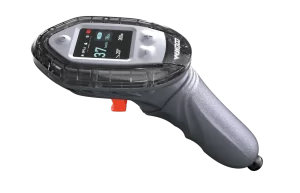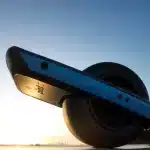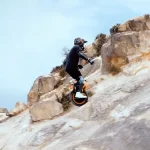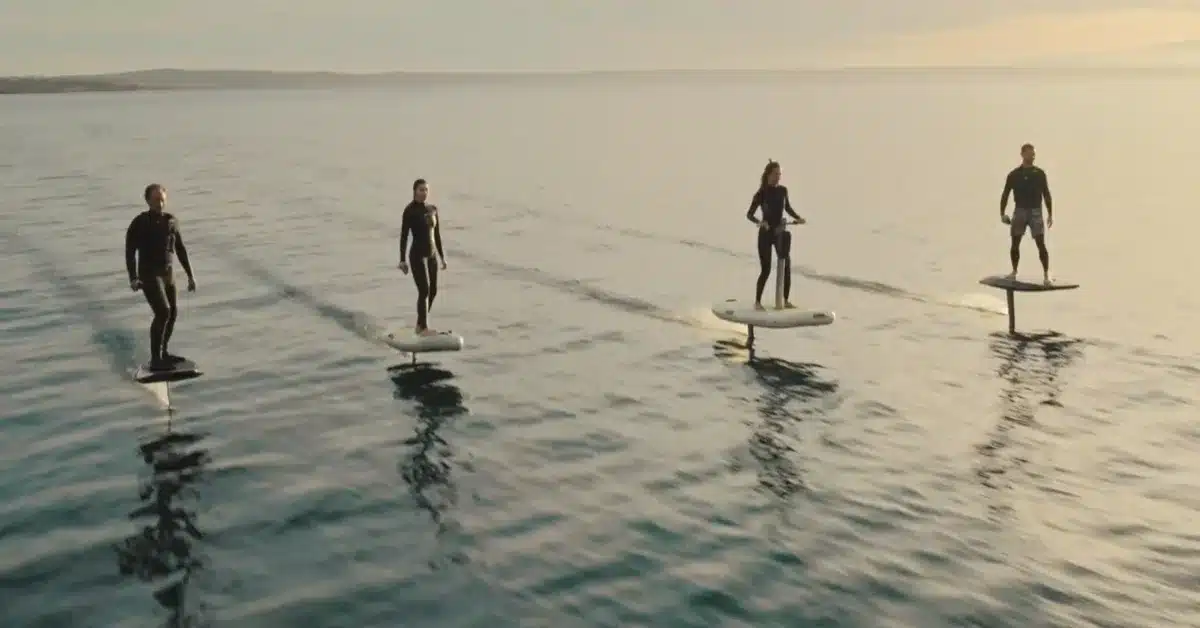
EFoils are a significant financial investment, and there are many choices to be made depending on the intended use, range of potential riders, and budget. It can be confusing to be presented with so many options so here we discuss the main considerations discussed with our customers when they purchase an eFoil.
It can be difficult for a beginner to pick the best configuration and in many cases there isn’t an ideal choice. Most reputable eFoil brands allow individual components (board, mast, wings) to be swapped out as riding evolves so the configuration can be modified a lot to keep riding interesting as the rider skills develop. But starting with an appropriate configuration can save money longer term, avoid initial disappointment and lead to a life-long passion for eFoiling.
Handlebars or Not
Most major eFoil brands offer a handlebar version of an eFoil (such as the Flitescooter, Aerofoils Hyperfly, Waydoo scooter kit). Allowing four point of contact they are much quicker to learn to ride than regular eFoils without handlebars but not as maneuverable. Typically they are also larger and more buoyant (around 230 litres) so support heaver (or two) riders, use a shorter mast (around 60cm) and the largest wing choice (1800-2000 square cm). This makes them quite stable and more forgiving during riding.
The handlebar versions of eFoils are popular as practical boat tenders and as fun watersport toys where people want to get foiling quickly, such as resorts. The handlebar can be removed from the board, allowing riding like a regular eFoil, albeit they are bulkier and heavier than regular eFoils. Although fun and convenient for a wide variety of people they don’t give the same level of long-term appeal for dedicated eFoilers.
Board Size
One of the first decisions to be made is the size (or buoyancy in litres) of the eFoil board. The board must be sufficiently buoyant to enable the rider to get planning atop the water when the motor is engaged and sufficiently stable to help a beginner stand up prior to foiling in choppy water conditions. Heavier and/or less experienced riders require a larger board, but once eFoiling is mastered riders generally target smaller boards.
As a rough guide, take the weight of the heaviest rider in kilograms, subtract 10 and aim for a board with at least that volume in litres when learning. More advanced riders generally will purchase smaller boards to have lighter and more nimble carving. Within reason a beginner can also start on a smaller board, but might require more time initially to learn how to get foiling as it will be a little more challenging to get the eFoil planing on the water’s surface.
Brands such as Audi’s Aerofoils, Flite, and Lift offer three board sizes, one around 100 litres for heavier or more casual riders, an intermediate size (between 65-85 litres) suitable for most experienced riders and providing a balance between stability and agility, and a smallest size (50-75 litres, close in size to the smallest pump foil boards) for the most advanced riders who are trying to minimise the board weight.
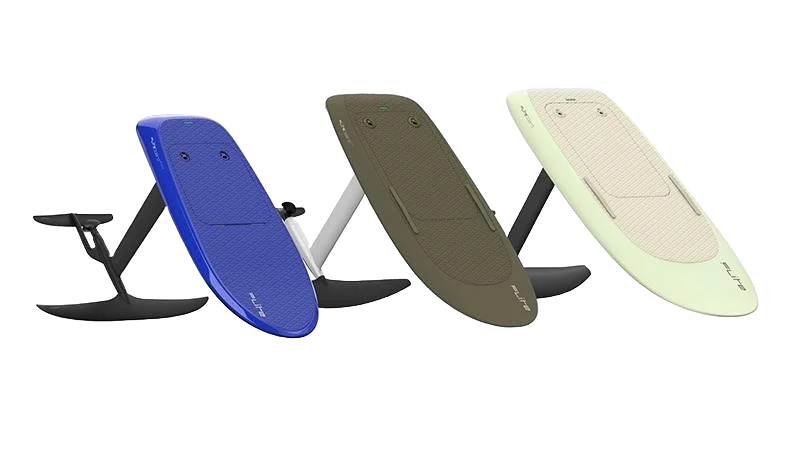
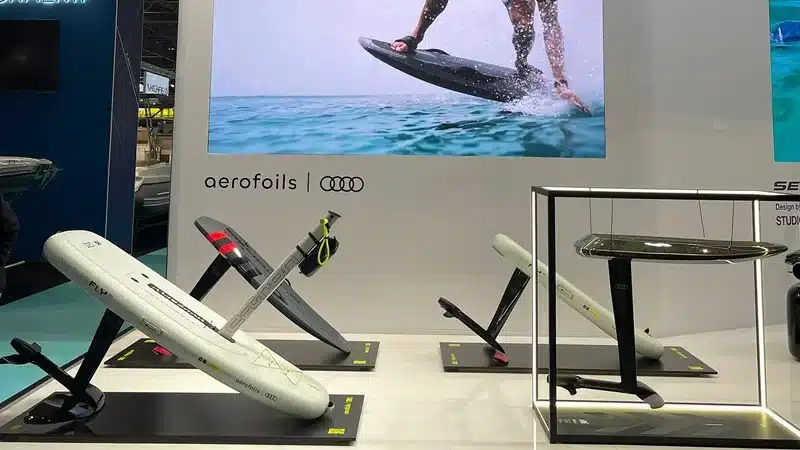
The volume determines the overall size and weight of the board, but it is not comparable across the brands. For instance the Aerofoils Performance is only 46 mm larger than the Flite PRO Carbon, and actually about 1 kg lighter, but provides 83 litres volume versus 67 litres.
Board Material
The composition of the board has the largest impact on the overall cost of the eFoil:
- An inflatable drop stitched construction around a solid foam core riding platform used as the budget option for Flite (Flitescooter, AIR and AIR PRO) and Aerofoils (Hyperfly and Airfly), costing as little as $500 (AIR, AIR PRO) and $3200 (Airfly). Inflatables are light, don’t damage easily (so convenient when they have to be dragged onto a boat or wharf) and more forgiving if a rider falls against the board. But inflatables cannot be shaped ideally for skimming the water surface and do tend to stick more to the water than rigid boards, although Aerofoils have a patented design to reduce the sticking characteristic. The cheaper Flite inflatables have noticeably lower quality manufacturing but are often chosen by beginners who plan to later upgrade the board and keep the inflatable for use by friends wanting to try eFoiling. Inflatables do pack down a little when deflated but they still have a solid core.
- Expanded Polypropylene foam (EPP) with an aluminium frame which is a popular budget board option used by Waydoo for beginners. Like inflatables the EPP boards are softer so more forgiving with impacts and falls.
- Flite have an intermediate price option of fibreglass for $4500 (or soft top which has an EVA foam layer wrapped around the top and sides of a fibreglass board). Fibreglass gives a more rigid board than an inflatable, about 1kg heavier than carbon and not quite as robust (although cheaper to repair) but costs a bit more than half that of a carbon board.
- Carbon fibre which is the premium option offered by Aerofoils, Flite, Lift and Waydoo. It is the most expensive option between $7000 and $8500 but also the lightest, most rigid and preferred option by experienced eFoilers as its ideal for skimming the water surface.
Although the prices of the boards vary substantially once up on the foil with the board out of the water the rider only notices its swing weight, and the ride is determined much more by the wing choice. The composition of the board is mostly relevant for the eFoil behaviour when planing and coming down off the foil.
Cheaper brands can also advertise carbon boards simply by using just a few layers of carbon fibre atop a cheaper material, but any structural strength weakness will be demonstrated by frequent issues of breaking or cracking boards. Carbon fibre requires expensive raw materials and has a lengthy production process, so discount carbon products should be treated with skepticism.
A carbon or fibreglass board should always be transported in a board bag to reduce the risk of damage. Nowadays manufacturers include board bags as standard.
Mast Choice
Generally there are two considerations for the mast connecting the board to the propulsion and wings: its length and whether it is made from aluminium or carbon fibre.
The mast generally come in at least two lengths, a shorter length mast around 60cm, which is commonly used on more-novice friendly models such as eFoils with handlebars, and a longer mast around 75-80cm, chosen for most eFoils, with the 80cm mast now becoming the preferred option with most manufacturers (including Flite who since their Series 4 have moved from 75cm to 80cm). A longer mast allows for tighter turns and riding higher through choppy conditions, getting more responsive but also less stable when the board is higher out of the water.
Masts are made from either aluminium (Flite, Waydoo and budget brands) or carbon fibre (Aerofoils, Lift, the Flite Marc Newson range, Waydoo 79cm mast). Although aluminium is heavier, it is cheaper and simpler to provide cooling to the ESC at the top of the mast. Generally carbon fibre gives a more rigid and lighter mast, being more responsive with less flex during turns so chosen for premium eFoils and by more demanding riders.
Some masts offer additional functionality. For example, the 60cm Aerofoils mast offers a switchable anti-breach system, when the mast gets too high in the water it feeds air into the propulsion which reduces the thrust and so lowering the height. Waydoo offers sensors to detect the mast height in the water to also help reduce breaches.
One complication with Flite is their mast design change after Series 3 from the regular/classical wing mount underneath the base of the mast to instead having a conical/nose wing mount more directly inline with the motor. This means from Series 4 in the Flite range the wings are not interchangeable with earlier wings.
Propulsion Choice
The standard propulsion for most eFoils was always the regular propeller (either metal or plastic), with an optional guard which would introduce additional drag but for safety was valuable for reducing the possibility of contact with an exposed propeller.
Although popular a regular propeller would lock in place when unpowered, producing too much drag for unpowered wave riding. Lift introduced a folding prop option, opening the door for eFoils to be used in waves and pumped similarly to unpowered foils, sacrificing some of the thrust and range of a regular propeller. Flite in turn introduced a true glide prop option, which would freespin when unpowered but still provide thrust similar to a regular propeller, and later also added a folding prop option, as did Waydoo.
Aerofoils instead took a different approach, designing a motor and jet combination with a fully enclosed impeller. Jets provide smoother acceleration, drag much less than a regular prop so viable when unpowered in waves, didn’t use a noisy gearbox, have a higher top speed, and eliminate the safety concerns of an exposed spinning propeller. As jets could have a less maximum thrust than a propeller, Aerofoils increased the typical eFoil motor from 5kW to 6kW and offered a higher-thrust impeller option for their smallest Competition board. Other brands took note, with Flite adding a jet attachment option for their original motor, which was suitable for moderate (but not high-speed) cruising, and other brands also offer more enclosed propeller options. From Series 5 Flite too has shifted to a redesigned motor+jet (Jet C) combination as the propulsion of choice for the majority of their riders, while retaining the interchangable regular/trueglide/folding prop (Prop C) options paired with the original motor for those that remain faithful to propellers (Jet C and Prop C are not interchangeable).
Due to Lift’s origins with unpowered foils, they chose to mount the motor part way up the mast rather than at its base. While this has come in for criticism as the propulsion is not in-line with the wing and it shortens the effective mast height, it does allow Lift to reuse its existing wing range from its unpowered foils. Lift series 5 also has adopted a quick connect system similar to that used by Awake to quickly connect the mast to the board without screws.
Wing and Stabiliser Choice
The (front) wing choice has the most significant effect on how an eFoil will feel to ride. Being able to easily swap wings and having a large choice of wings enables an eFoil to be modified as the skill or interests of the rider evolves – this is a major long-term advantage of eFoils over other water sports equipment such as jetskis and electric surfboards.
The lift provided by a wing increases with its surface area (measured in square centimetres) and speed relative to the water. Heavier riders require larger wings or more speed to generate sufficient lift, whereas a lighter rider might struggle to have sufficient downward pressure to prevent a large wing from breaching. The wing shape also affects many of the ride characteristics, anhedral (curving downward) wings generally are more stable, dampening rolling motion, so suitable for novices and in rough conditions, but less nimble in turns compared to flatter or dihedral (curving upward) wings. Higher aspect wings (wider span) are faster with less drag but give less lift and longer turns compared lower aspect (shorter span) wings. Brands such as Aerofoils, Flite and Lift all offer a comprehensive range of wing options.
Generally the front wing is matched with a suitable stabiliser – the larger wings paired with larger stabilisers. The smaller the stabiliser or the closer it is positioned to the front wing the looser the ride will be. With Flite, Aerofoils and Sifly a shim can be used to change the stabiliser angle relative to the front wing, making the ride more stable at higher angles but also creating more lift at speed and pushing up the nose of the board, so requiring more front foot pressure to keep the board level. Lower (or negative) shim angles reduce the required front foot pressure.
Aerofoils have seven wing options. For most riders the Freeride 1350 is an excellent initial wing, a little challenging for novices but still manageable and a great all-round wing. Very heavy or unsure riders might instead choose the larger and more stable Easyride 1750 or Easyride 2000 wing, which is also used with the Hyperfly. Very light or experienced riders might start with the smaller Freeride 1100. As riding progresses one of the more advanced Freecarve 1250, Freecarve 1000 or Freerace 900 wings might be added. They are stunning wings with complex profiles illustrating a lot of hydrodynamic research, but their very fine wing tips require extra care to protect from damage.
Flite have eleven wings in their classic (up to series 3 mast) range, and seven in their conical (from series 4) range, with more conical wing to be phased in as FLITElab’s AMP gets released. Flite generally encourage customers to start with a Cruiser 1800 or Cruiser 1100 wing (depending on rider weight), but we’ve found riders quickly outgrow those wings. Instead the most popular wing choice for our beginners is the Cruiser Jet 1500 or 1500C – a large wing with sufficient stability for learning but also a great general purpose cruising wing for intermediate riders and suitable for catching slow swell. Intermediate riders that want to catch waves usually prefer a Flow wing (mostly Flow 1100 or 1100C, heavier riders take the MN 1300C), and those that want a loose carving experience pick one of the Flow S wings. Bay Foils in California have a good comparison of all the classic Flite wings at https://www.youtube.com/watch?v=zgCYeaaarNw
Lift have the most extensive range of wings available from their unpowered foils, many of which are suitable for their eFoils. Beginners might start with a Camber Pro 270 or 210 wing (equivalent to 1740 and 1350 square centimetres) and later progress to some of the Havoc or High Aspect wing range.
For their newer EVO eFoils Waydoo offer the Voyager 1500 wing for beginners as a slow and stable wing, a smaller Voyager 1100, and the higher aspect Glider 1500, but lacks the variety offered by the other major brands. It does however offer a budget fibreglass version of each wing. Similarly, Swedish brand Awake offer the Powder 1800 and 1400 wings for beginners and the higher aspect Fluid 1300 and 1000 wings.
All brands generally include wing covers to protect the wings and stabilisers from damage when transporting.
Battery Size
The major eFoil brands generally offer at least two sizes of LI batteries for their eFoils. The Aerofoils Endurance 2.23 kWh, Flitecell Explore 2.1 kWh, Lift Gen5 2.2 kWh are the larger and heavier batteries designed for maximum range. The Aerofoils Light 1.13kWh, Flitecell Sport 1.6 kWh, and Lift’s earlier Gen4 Light battery have shorter range but are less expensive and lighter, so easier for unpowered wave riding and carrying the assembled eFoil to the water.
The choice between the larger or smaller battery depends more on the intended use than the budget. A larger capacity battery is typically chosen when an eFoil might be shared between multiple riders during an outing, used extensively by novices or very heavy riders (who drain batteries significantly faster), when recharging might be difficult at the ride location, or for venturing longer distances. A smaller capacity battery might be chosen by a rider for their own regular use to reduce weight or when breaks are taken near a recharging location.
Flite also have an even smaller Flitecell Nano 0.806 kWh option. This battery is only NZ$450 less expensive than the Sport battery but has half its capacity. Its benefit however lies in its extra light weight, at only 6.2 kg it is often chosen for the dedicated wave riders on a small Ultra L2 board who mostly only need the motor to ride between wave catching.
At Atomic EV most of our Flite customers choose the Sport battery (especially with an AIR or AIR PRO which cannot take an Explore), those purchasing for sharing with family and friends choose the Explore, and those focusing on wave riding choose Nano (often as a second battery). For our Aerofoils customers most choose the larger Endurance battery, which at 13.2 kg has the highest capacity:weight ratio amongst eFoil batteries.
Charger Choice
All the brands offer a rapid charger with their eFoils, capable of charging a large battery in 1.5-2 hours, with some premium chargers also offering a slow charge option which is more gentle on the battery cells. Aerofoils, Flite and Waydoo also offer a budget slower charger for those riders who do not need to quickly recharge their battery prior to a ride.
Controller Choice
The controller (hand-held remote) functionality and aesthetics vary significantly between brands. All have GPS for tracking rides and wrist strap, all except Lift have a safety cutout feature that locks the motor after a fall and gears which set the maximum motor output, making it easier for beginners to regulate their speed without having to adjust the trigger. Flite offer two controller options, the regular and fairly basic but functional Flite Controller, and also the premium Marc Newson controller which has a full colour screen similar to the Aerofoils remote.
Accessories
Your eFoil purchase should come complete with board bag, wing and stabliser covers, and any tools required to assemble the eFoil. With Atomic EV there are no hidden costs, no required additional purchases, nor shipping fees to NZ residential addresses.
For safety it is worthwhile investing in a water helmet, particularly while learning, riding in rough conditions or solo, and a personal flotation device (PFD) or impact vest. Check out our water sports protection range.
In northern parts of New Zealand a wetsuit (such as a 3/2 steamer) is sufficient in the winter months, and a thicker wetsuit further south. A dry bag or pouch is also helpful for keeping items (such as mobile phone, keys, sunscreen) while riding.
Each brand has a free mobile application that can be used to download ride statistics from the eFoil, diagnose issues and update firmware.

